POS Automation Training Workspace Setup with Pre-Bundled Enactor Dependencies
Overview
This document explains how to set up a POS Automation Training Workspace for writing and executing automation tests on POS.
In this setup, all required dependencies are provided in a prepackaged ZIP bundle, ensuring a straightforward installation process without the need for external repository access.
By completing the steps in this guide, you will create a separate Eclipse workspace that includes all necessary projects, jars, launch configurations, and settings to act as the Automation Client.
When your already setup POS is configured to run in Automation Mode, it will operate as the AUT server, while the AUT launches from this Automation Workspace will serve as the AUT client, enabling end-to-end automation.
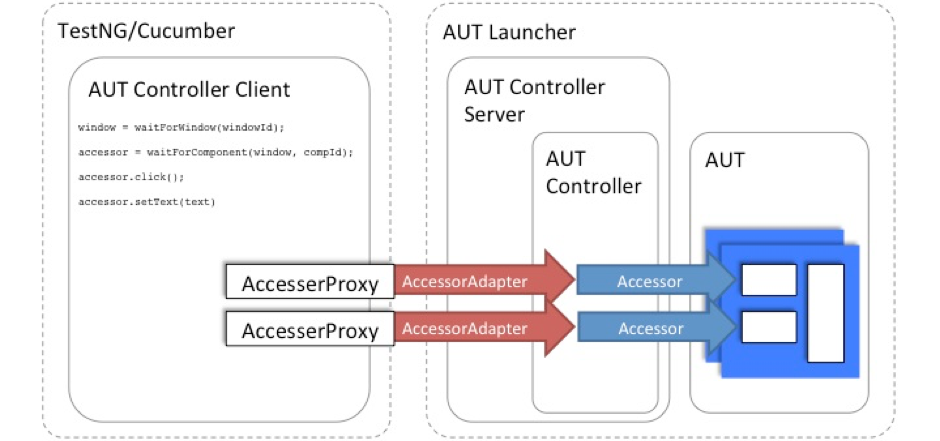
What You Will Learn
- How to setup Eclipse to support POS Automation
- How to set up the Eclipse workspace to run POS Automation using Maven scripts and MSI POS.
Pre-requisites
- Java
- Eclipse IDE
- Ensure Enactor POS is set up
- Need to have the Enactor POS Automation zip
Setup an MSI POS in Automation Mode
Refer Set up MSI POS in Automation Mode and set up your POS in automation mode .
Using the Workspace Setup
Download the following zip file AutomationWorkspaceSetup.zip and and extract it into the C:\Development directory
Launch Eclipse and when prompted for a workspace enter the following path C:\Development
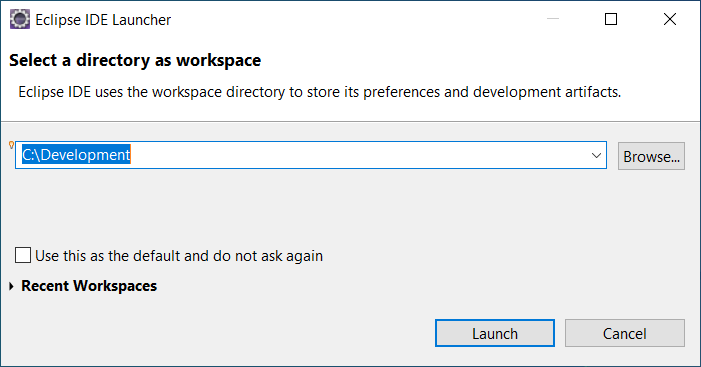
Click Launch... button
Cucumber Plugin Installation
Install the Cucumber Plugin referring to Cucumber Plugin installation
Switching to the Automation Workspace
Switch to the Automation workspace as in Switching to the Automation Workspace
Under Import Config section no need to import Enactor Home.
Make sure you follow upto Importing Working projects
Extract Enactor Dependencies
You need to install the bundled enactor dependencies.
For that, extract the given Automation.zip folder.
Copy all the jars in enactor-lib folder to the lib folder of Training Pos - Automation Test project.
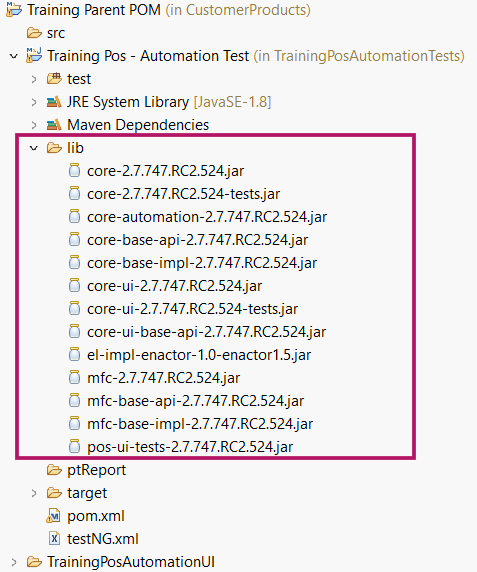
Then, open the pom.xml of Training Parent POM project.
First, you need to update the versions of platform.branch and the platform.version.
For that,consider the core jar dependency inside the enactor-lib folder.
If the dependency name is core-2.7.747.RC2.270.jar, update the pom.xml as follows.
- platform.branch - 2.7.747.RC2
- platform.version - 2.7.747.RC2.270
Then, update the versions of both Enactor and external dependencies by matching them with the extracted JAR files.
ex: If the el-impl-enactor-1.0-enactor1.5.jar is present, update the el.impl.version as follows.
<el.impl.version>1.0-enactor1.5</el.impl.version>
Further, Consider having the ext-lib jars as folllows.

When the versions are updated accordingly, Your pom.xml should look as below.
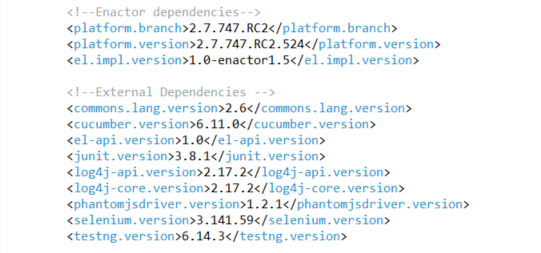
Build Automation Jars
Build the extracted enactor dependencies using Run menu → Run Configurations
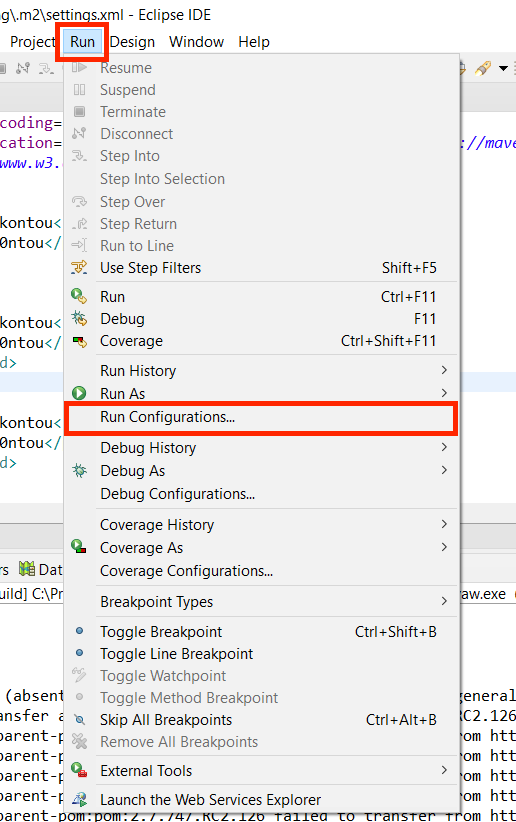
Select Install Enactor Dependencies
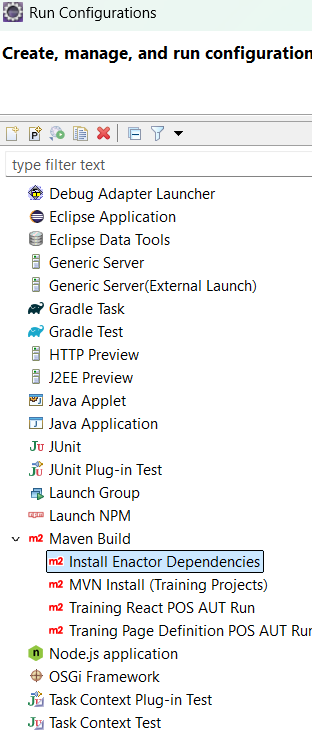
Go to the JRE section, choose Alternate JRE:, select the appropriate Java JDK, and click Run to proceed.
Build the Working Projects
Build the projects by refering Building local Projects and do a Maven update.
Running a feature
Refer Running a feature to run automation using Cucumber and Maven.